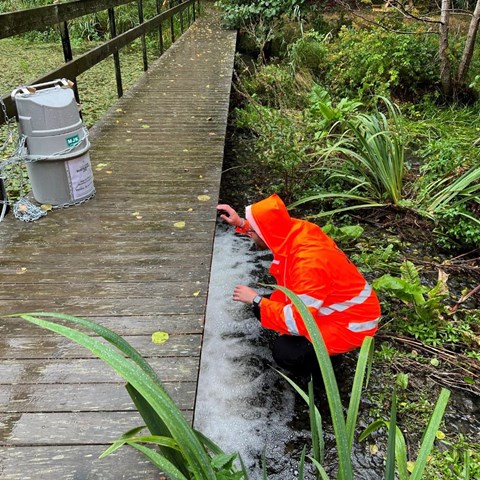Contact
Department of Aquatic Sciences and Assessment, Division of Environmental Organic Chemistry and Ecotoxicology

SAFESTORM is a Formas project focusing on toxic chemicals in stormwater. The project aims to increase the knowledge on contaminants that slip through storm water treatment ponds and therefore pose a threat to source water quality.
Human activity impacts the environment in many different ways. One example is the dispersion of thousands of synthetic chemicals. Such chemical exposure can affect both human health and the environment. Thus, there is an urgent need to identify toxic contaminants of emerging concern. The SAFESTORM project contributes to this by finding new ways to identify known pollutants, as well as finding new, unknown pollutants in stormwater.
Runoff rain and meltwater from urbanized areas are contaminated by a wide range of environmental pollutants deriving from traffic, road surface wear, buildings, weed control, and other urban elements and activities. Urban runoff water is typically collected in stormwater ponds and then released into rivers or lakes without further purification. Thus, the discharge of toxic micropollutants to water bodies may lead to harmful ecotoxicological effects, altered ecosystem structure/function, reduced biodiversity, food-chain pollution, and human exposure to toxic substances through drinking water.
SAFESTORM focuses on revealing toxic compounds slipping through stormwater ponds, thereby contaminating recipients including drinking water sources. To that purpose, we will develop mass spectrometry and cell-based bioassay workflows for chemical and toxicological characterization of organic micropollutants in samples from stormwater ponds and their recipients, before and after heavy rainfalls.
SAFESTORM performs field sampling campaigns at two contrasting stormwater treatment sites. The Tibble stormwater pond in Kungsängen (Uplands-Bro municipality), is a traditional facility, and the Rosendal stormwater system in Uppsala municipality, represents a so-called blue-green infrastructure with a more modern design. Both systems aim to protect recipients from unwanted chemical substances.
Karin Wiberg, Oksana Golovko, Anna-Karin Dahlberg, Alberto Celma, Johan Lundqvist
Pablo Gago Ferrero